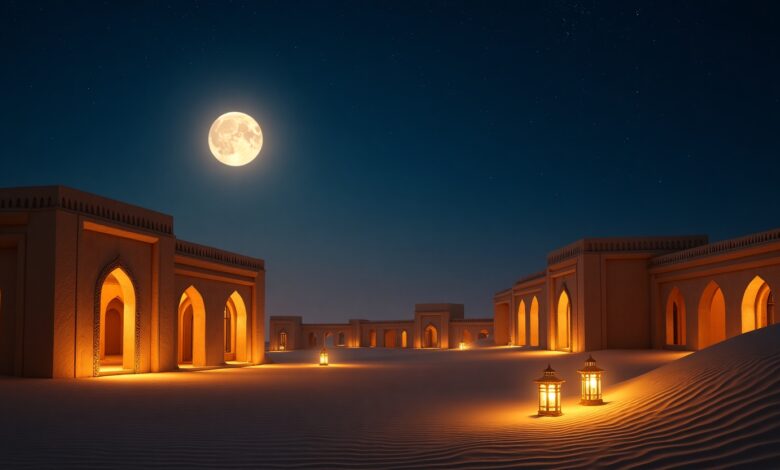The Mesmerizing World of Arabian Nights Music

Step into a world shimmering with lantern light and scented with spices—this is the soundscape of Arabian Nights music. Close your eyes, and the air shivers with the strum of an oud or the haunting call of a ney flute. Magic thrums behind every note, conjuring bustling markets, moonlit deserts, and legendary tales. These melodies, layered and rich, don’t just decorate stories—they breathe life into them. Even today, Arabian Nights music enchants listeners far beyond the borders of Arabia, inviting everyone into a tapestry of ancient wonder.
The Story Behind Arabian Nights Music
The music of Arabian Nights is anything but simple. Like the tales themselves, it blends many traditions in one seamless weave. The stories—known as “One Thousand and One Nights”—began as folk legends passed along trade routes, picking up flavors from every culture they touched.
Origins and Transmission Through Time
It all started centuries ago, when merchants and travelers carried tales across the sands. Storytellers, or hakawatis, spun these sagas from town squares to royal courts. The tradition was oral, but over time, scribes recorded these tales, preserving their music in words and notation.
With every retelling, local music and customs shaped the soundscape. Arabian music as we know it pulls rhythms, scales, and instruments from Arabic, Persian, Indian, Greek, Jewish, and Turkish roots. Every culture added its color, just as every musician adds their flair today.
Literary Motifs and Their Musical Echoes
The tales themselves—full of danger, romance, and surprise—offered a blueprint for composers. Characters such as Scheherazade, who spun stories to escape peril, became motifs in symphonies and operas around the world.
Composers wrote sweeping themes for each hero or villain. Melodies rose and fell with each narrow escape, heartbreak, or transformation. The music mirrored the stories’ wild shifts: calm and gentle in one moment, wild and unpredictable the next. Renowned pieces like Rimsky-Korsakov’s “Scheherazade” and other classical compositions inspired by Arabian Nights become new tales all their own.
Sounds and Styles: Musical Signatures of the Arabian Nights
The sound of Arabian Nights is instantly recognizable. Unique instruments, intricate rhythms, and vivid melodies set it apart.
Traditional Instruments and Arabic Modes
Four instruments are central:
- Oud: A pear-shaped lute, its strings coax out deep, mellow tones.
- Qanun: A zither with 26 sets of strings, plucked for shimmering, quick melodies.
- Ney: An end-blown flute, its airy voice full of longing and mystery.
- Darbuka: A goblet drum, driving the beat with snappy, complex rhythms.
The music uses maqams, or modal scales. Unlike simple Western major or minor scales, maqams offer at least a dozen flavors, each setting a mood. Some maqams carry a sense of melancholy; others swirl with joy. Musicians improvise within these modes, weaving fresh tales every time they play.
 Photo by Lucas Craig
Photo by Lucas Craig
From Classics to Contemporary Soundtracks
The appeal of Arabian Nights isn’t frozen in time. The symphonic suite “Scheherazade” by Rimsky-Korsakov, with its swirling strings and evocative violin solos, made the storytelling princess a symbol for musical imagination. Classical music by Ravel, Boïeldieu, and others carried the tradition forward, layering Western and Eastern harmonies.
Modern film composers and pop artists continue the trend. Soundtracks for movies like Aladdin use these musical signatures—exotic scales, sprawling orchestrations, driving percussion—to set mood and place. Folk and electronic artists across the globe sample Arabic instruments or borrow maqams, showing the sound remains alive, ever-changing, and ready to cast a fresh spell.
Conclusion
The music of Arabian Nights weaves a spell as strong as any magic carpet. Its blend of cultures, centuries, and sounds can whisk listeners from the comfort of their homes to the spice-scented nights and golden palaces of faraway lands. Every note offers escape and discovery—a chance to see the world with new ears, every time. The lasting power of this music lies in its ability to connect listeners, spark imagination, and remind us that stories—like melodies—belong to everyone willing to listen. Arabian Nights music remains an open invitation to wonder, stirring old dreams and inspiring new ones, across every border and through every generation.
